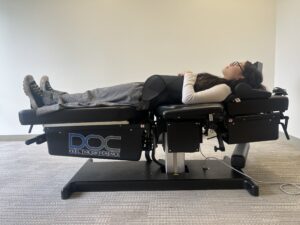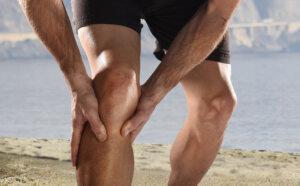We all know that exercise is an important aspect of a healthy lifestyle. Many of us are involved in recreational or competitive high-impact sports such as running, basketball, football or soccer. Yet just as important as staying in shape, is making sure the spine is protected and looked after. What is a high impact sport? What impact does it have on the spine?
While it is a common belief that impact sports are bad for the spine, research has shown the opposite to be true. The American Journal of Epidemiology states that high-impact sports have an osteogenic effect on the skeletal system that aids in increased bone mineral density (BMD), which becomes more and more important as the body ages. Exercises which stretch, strengthen and condition the muscles, help support the spine and the body’s weight. When the skeletal system is properly supported there is a reduced chance of spinal injury.
Bone is a living tissue that reacts to exercise by becoming stronger
The spine is made up of 24 semi-rigid vertebrae separated by cartilaginous discs. The intervertebral discs act as shock absorbers and allow dynamic movement. Ligaments run along the spine and provide stability. While several muscle groups attached to the spine provide strength support and play a critical role in spinal health. Research by the Journal of Strength and Conditioning notes that high-impact sports have a beneficial effect on the spine and its BMD. The study found that like muscles, “bone is a living tissue that reacts to exercise by becoming stronger”. Exercise in which the body is forced to work against gravity, like running, jumping and weight training, increase bone strength.
Are high impact exercises bad for me? We know that strength and muscle building exercises are beneficial. Furthermore, research has found that high-impact exercise has a greater beneficial effect on the spine than muscle strengthening alone. An athlete competing in soccer or basketball for example generally has less muscle mass than a weight trainer, yet has a higher BMD. The research, thus, concluded that athletes involved in low-impact sports like swimming and cycling should add high-impact activities to their workouts. A corroborating study in the Sports Health Journal also concluded that for a stronger spine, combined exercises of resistance, aerobic and high-impact training are recommended. The study also found that both young and older athletes participating in high-impact sports positively influenced their bone health.
The spine is the foundation that keeps us whole
As we mentioned in a previous feature on TruSpine, the spine is the foundation that keeps us whole. Loss of spinal BMD and the subsequent chance of fractures increases with age in both males and females. While we’ve seen that high-impact sports can help with this aspect, they also have their drawbacks. The speed and power of high-impact sports mean that it is common for athletes to sustain cervical and lumbar spine injuries notes the Huffington Post. A hard tackle or a body check, for example, can affect the integrity and structure of the spinal column.
Back injuries in sport are some of the most serious and can put a player out for an extended period of time, or even end their career. Soccer website Ladbrokes reported that Brazilian star Neymar broke a bone in his back during the 2014 World Cup. The striker was told that if the break had occurred a few centimeters to the side his career would have been over. Through minor surgery and rehabilitation, Neymar was able to return to the soccer field. With sports today being more fierce and intense than ever before sports stars work on protecting the spine. While it is impossible to protect the spine against outside forces, athletes will make sure that core exercises are included in their exercise regime.
Most injuries are preventable with proper conditioning, prevention exercises, and chiropractic. Unless you have an underlining back condition, playing high impact sports is beneficial to the spine.
To get to the root cause of pain and discomfort, schedule an initial consultation, including a comprehensive evaluation and first treatment.
– Contribution by FabulouslyFit
How about a quick and easy way to share this information?




